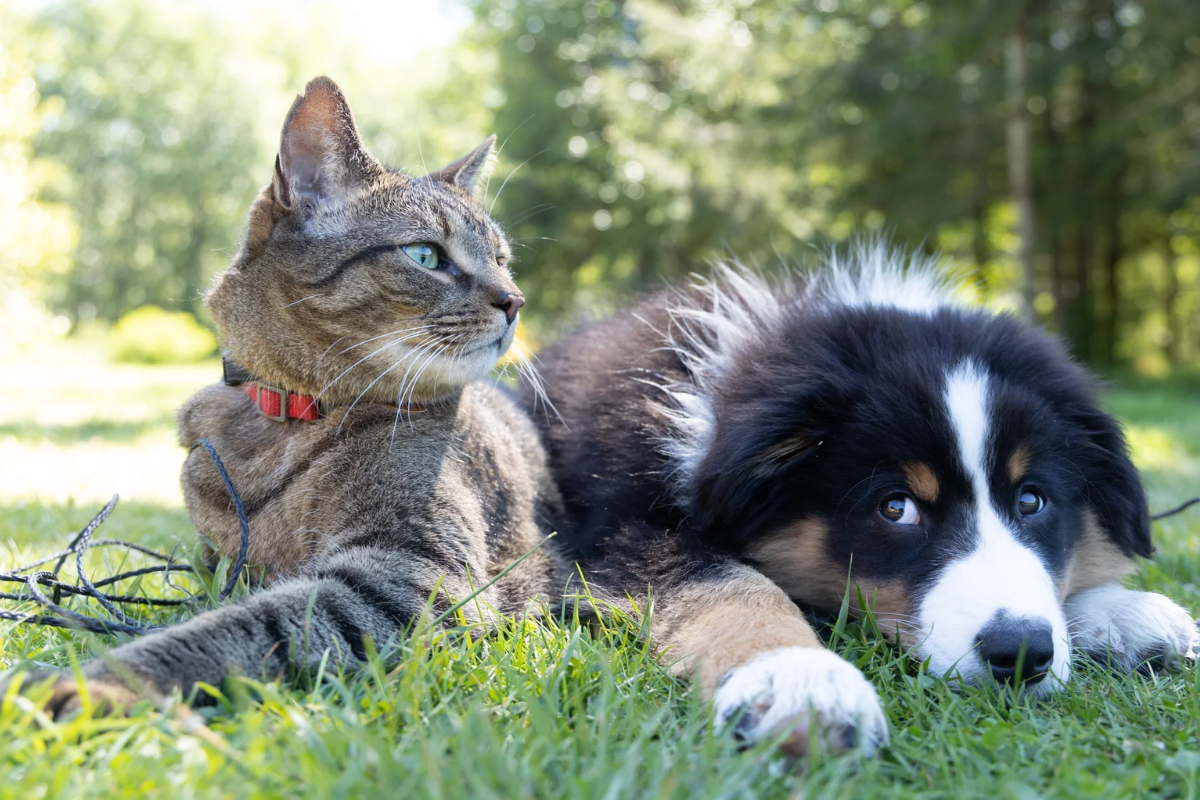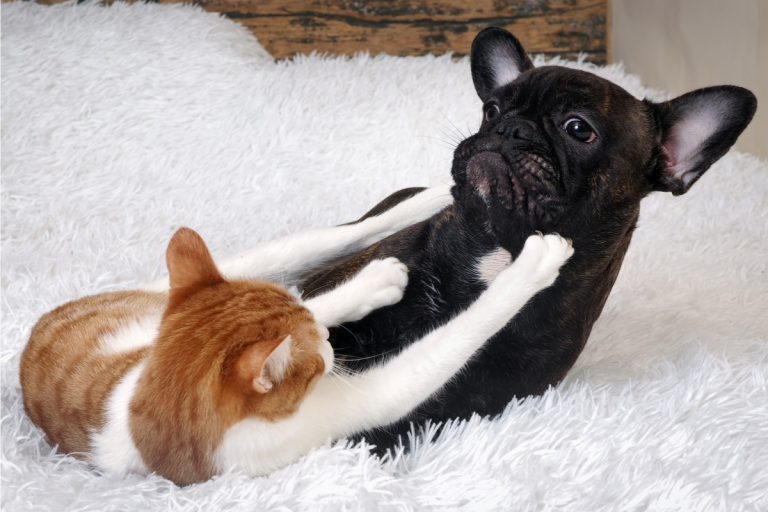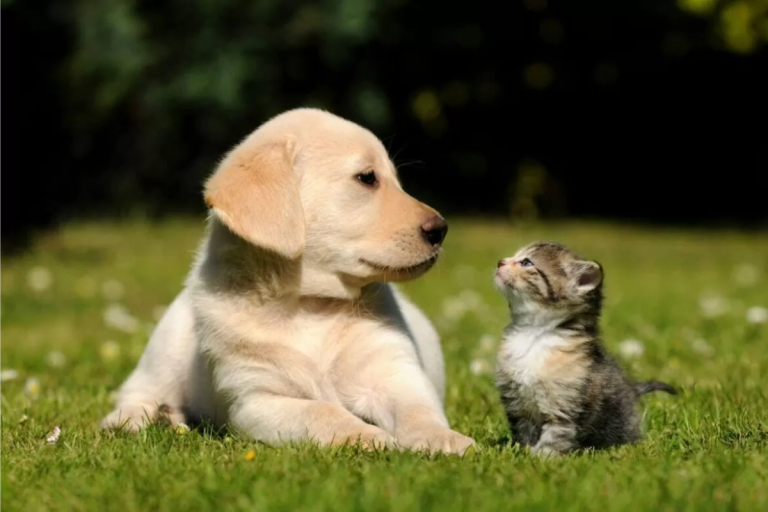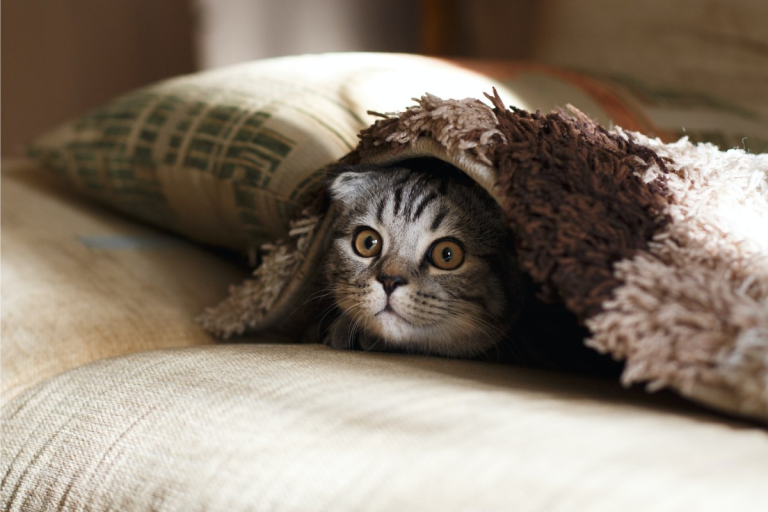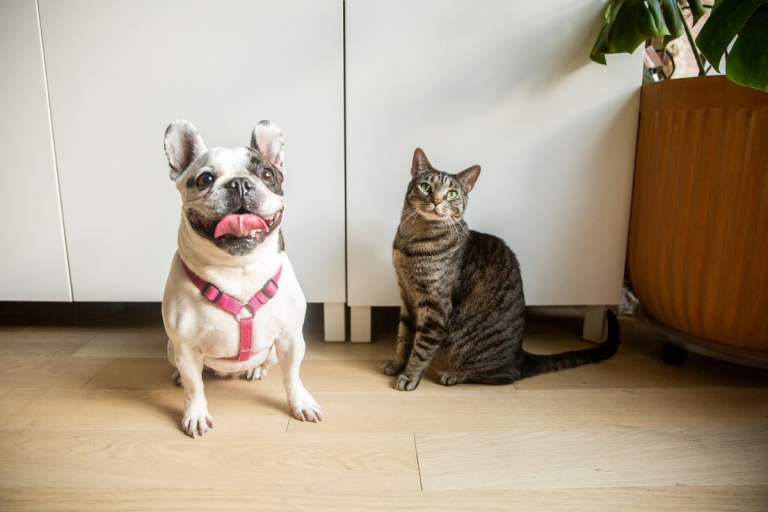Why Do Cats and Dogs Fight Over Territory?
When you think of cats and dogs, you might envision playful companions frolicking together. However, it’s not uncommon for these furry friends to clash, particularly when it comes to territorial disputes. Understanding why cats and dogs fight over territory is essential for any pet owner who wants to create a harmonious home.
Understanding Territory in Cats and Dogs
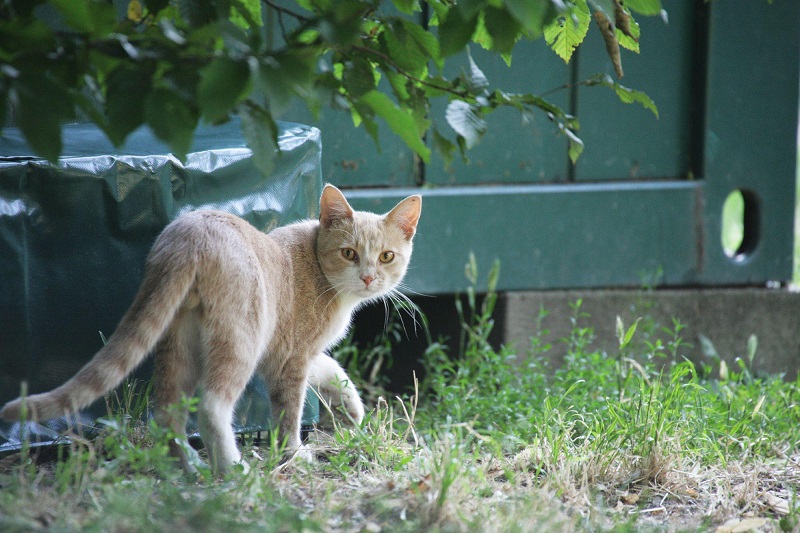
Territory is a fundamental aspect of behavior in both cats and dogs. It encompasses the physical space they claim as their own, which is crucial for their well-being and sense of security.
What Is Territory?
Territory refers to the area that an animal claims as its own. For cats and dogs, this space can be as small as a specific corner of a room or as large as your entire backyard. Animals instinctively establish territories to ensure they have enough resources, such as food, shelter, and mates. It’s like having your own little kingdom where you reign supreme!
Why Territory Matters to Pets
Territory is crucial for pets because it offers them a sense of security and ownership. When a
The Instinctual Drives Behind Territorial Behavior
Territorial behavior in pets stems from deep-rooted instincts that have evolved over time. Understanding these instincts can help explain why your pets may act defensively in their spaces.
Evolutionary Roots of Territoriality
Both cats and dogs have evolved from wild ancestors who needed to protect their territories to survive. In the wild, establishing a territory meant securing food sources and keeping rivals at bay. This instinct remains strong in our domesticated pets today. Even though they may live in our homes, the urge to protect their territory still runs deep.
The Role of Social Structure in Cats and Dogs
The social structure of cats and dogs also influences their territorial behavior. Dogs are pack animals and may feel the need to assert their dominance in a shared space. On the other hand, cats are more solitary by nature and can be quite particular about their territory. When these two worlds collide, it can lead to misunderstandings and conflict.
Signs of Territorial Disputes Between Cats and Dogs
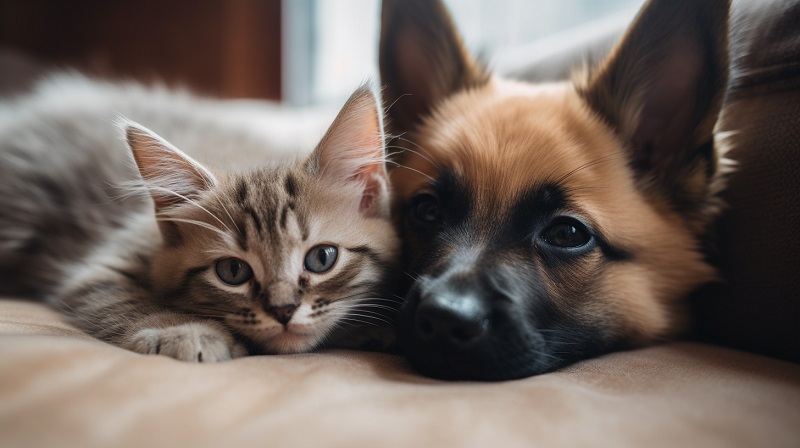
Recognizing the signs of territorial disputes can help you intervene before things escalate. Being aware of these behaviors can save you from potential conflicts.
Common Behaviors to Watch For
Knowing how to identify territorial disputes is key to preventing fights. Look for signs such as growling, hissing, or raised hackles in dogs and cats. Other behaviors include marking their territory through scratching or urinating, or even staring each other down. These signals can indicate that a fight over territory is brewing.
How to Identify a Territorial Battle
If you suspect a territorial battle is happening, pay attention to your pets’ body language. A dog may become stiff, with its tail held high, while a
Factors Contributing to Fights Over Territory
Several factors can influence territorial disputes between pets. Understanding these factors can help you identify potential triggers in your household.
Environmental Triggers
Several factors can trigger territorial disputes. A new pet in the home, changes in furniture layout, or even a new family member can unsettle the balance of territory. Pets thrive on routine and familiarity, and any disruption can lead to skirmishes. Think of it like this: if you moved into a new neighborhood and your neighbors were not friendly, you’d probably feel a bit on edge too.
Personality Differences Between Pets
Not all pets are created equal. Some dogs are naturally more dominant, while certain cats are more skittish. When these personalities clash, territorial fights can ensue. Understanding your pets’ individual personalities can help you navigate these differences and minimize conflicts.
How to Manage Territorial Conflicts
Implementing effective management strategies is crucial for reducing territorial disputes. By taking proactive steps, you can help your pets coexist peacefully.
Creating a Peaceful Environment
The first step in managing territorial disputes is to create a peaceful environment. Ensure each pet has its own space, complete with food, water, and a comfortable resting area. This way, they won’t feel the need to compete for resources. It’s like giving each pet their own little fortress—everyone feels safer!
Training Techniques for Better Coexistence
Training your pets can also significantly reduce territorial disputes. Teach them commands like “leave it” or “stay” to help manage their behavior. Positive reinforcement, such as treats and praise, can encourage them to associate each other’s presence with good experiences. This way, you’re not just training them to coexist; you’re building a friendship!
FAQs
1. Can cats and dogs share the same space?
Yes, with proper training and management, cats and dogs can share the same space peacefully. Providing separate areas and positive reinforcement can help them coexist.
2. How can I tell if my pets are fighting or playing?
Watch their body language. If they are growling, hissing, or showing signs of aggression, it’s likely a fight. Playful interactions are usually characterized by relaxed postures and playful behaviors.
3. What should I do if my pets fight?
If a fight breaks out, avoid intervening directly. Instead, create a distraction, like making a loud noise, to separate them safely. Assess the situation afterward to identify triggers.
4. Is territorial behavior normal?
Yes, territorial behavior is a normal instinct for both cats and dogs. It’s part of their survival instinct and should be managed, not eliminated.
5. Can I prevent territorial fights?
While you can’t completely eliminate territorial instincts, you can reduce the likelihood of fights by creating separate spaces for your pets and training them to coexist peacefully.
Conclusion
Understanding why cats and dogs fight over territory is crucial for fostering a peaceful home. By recognizing the instinctual drives behind their behavior, identifying signs of territorial disputes, and implementing effective management strategies, you can help your furry companions live in harmony. Remember, a little patience and understanding can go a long way in creating a balanced household.
